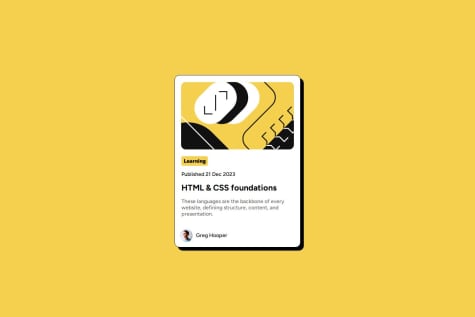I'm glad to have continued working with Sass and BEM (and am enjoying it!), and feel I'm getting more comfortable and familiar with how to implement them together. I feel as though I'm getting much faster and more familiar with layouts in general and working with flexbox and elements such as `````` for good responsive design.
Next time I would consider using grid more instead of flex everywhere, it is probably my default preference. I would also spend a little more time planning out the layout and solution before beginning coding as I ended up changing the Sass structure a few times.
What challenges did you encounter, and how did you overcome them?It took me some time to get the image correct for the footer! I was playing around with it for a long time because of my lack of understanding of the position property, and the stacking context, things I'm probably still not fully understanding. I found a helpful digital ocean tutorial (linked in the readme), and just kept trying different things until it was correct. Working with images is something I'm still getting better at.
I would love to ask for feedback on two things in particular:
- How I have used Sass and BEM in the project
- Whether the pictures in the solution should have been done in a different way. Particularly things like the mobile footer picture looks zoomed in compared to the design.
Thank you for looking at my solution!











